As you know, TextInputLayout uses a private helper class to handle the hint text stylings and animations. This class - CollapsingTextHelper - maintains separate typefaces for its collapsed and expanded states. We just need to set the right one, which we'll do using reflection.
I usually package these kinds of functionalities into custom subclasses, so I'll do the same here. If you don't want to use a subclass, the reflection stuff could be easily pulled into some simple methods you can put in your Activity or utility class.
public class CustomTextInputLayout extends TextInputLayout {
private Object collapsingTextHelper;
private Method setCollapsedTypefaceMethod;
private Method setExpandedTypefaceMethod;
public CustomTextInputLayout(Context context) {
this(context, null);
}
public CustomTextInputLayout(Context context, AttributeSet attrs) {
this(context, attrs, 0);
}
public CustomTextInputLayout(Context context, AttributeSet attrs, int defStyleAttr) {
super(context, attrs, defStyleAttr);
init();
}
private void init() {
try {
Field cthField = TextInputLayout.class
.getDeclaredField("mCollapsingTextHelper");
cthField.setAccessible(true);
collapsingTextHelper = cthField.get(this);
setCollapsedTypefaceMethod = collapsingTextHelper
.getClass().getDeclaredMethod("setCollapsedTypeface", Typeface.class);
setCollapsedTypefaceMethod.setAccessible(true);
setExpandedTypefaceMethod = collapsingTextHelper
.getClass().getDeclaredMethod("setExpandedTypeface", Typeface.class);
setExpandedTypefaceMethod.setAccessible(true);
}
catch (NoSuchFieldException | IllegalAccessException | NoSuchMethodException e) {
collapsingTextHelper = null;
setCollapsedTypefaceMethod = null;
setExpandedTypefaceMethod = null;
e.printStackTrace();
}
}
public void setCollapsedTypeface(Typeface typeface) {
if (collapsingTextHelper == null) {
return;
}
try {
setCollapsedTypefaceMethod.invoke(collapsingTextHelper, typeface);
}
catch (IllegalAccessException | IllegalArgumentException | InvocationTargetException e) {
e.printStackTrace();
}
}
public void setExpandedTypeface(Typeface typeface) {
if (collapsingTextHelper == null) {
return;
}
try {
setExpandedTypefaceMethod.invoke(collapsingTextHelper, typeface);
}
catch (IllegalAccessException | IllegalArgumentException | InvocationTargetException e) {
e.printStackTrace();
}
}
}
Somewhat counterintuitively, TextInputLayout's collapsed state is when the hint is the floating label above the EditText. Its expanded state is when the hint is in the "normal" position, inside the EditText. Methods to set the typeface for both states are given above.
This is a drop-in replacement for TextInputLayout, and you can use it in your layouts just as you would that. For example:
<com.mycompany.myapp.CustomTextInputLayout
android:id="@+id/username_til"
android:layout_width="match_parent"
android:layout_height="wrap_content"
app:hintTextAppearance="@style/TextLabel">
<android.support.design.widget.TextInputEditText
android:layout_width="match_parent"
android:layout_height="wrap_content"
android:textSize="24sp"
android:hint="Username" />
</com.mycompany.myapp.CustomTextInputLayout>
In your code, to set the typeface of the floating text hint:
CustomTextInputLayout usernameTextInputLayout =
(CustomTextInputLayout) findViewById(R.id.username_til);
usernameTextInputLayout.setCollapsedTypeface(Utils.ROBOTO_BOLD_TYPE_FACE);
The CollapsingTextHelper methods used above were added in version 23.1.0 of the support library. If you're using a previous version, or you're getting a NoSuchMethodException for some other reason, the original version of my answer that directly sets the typeface fields should work, no matter the version.

